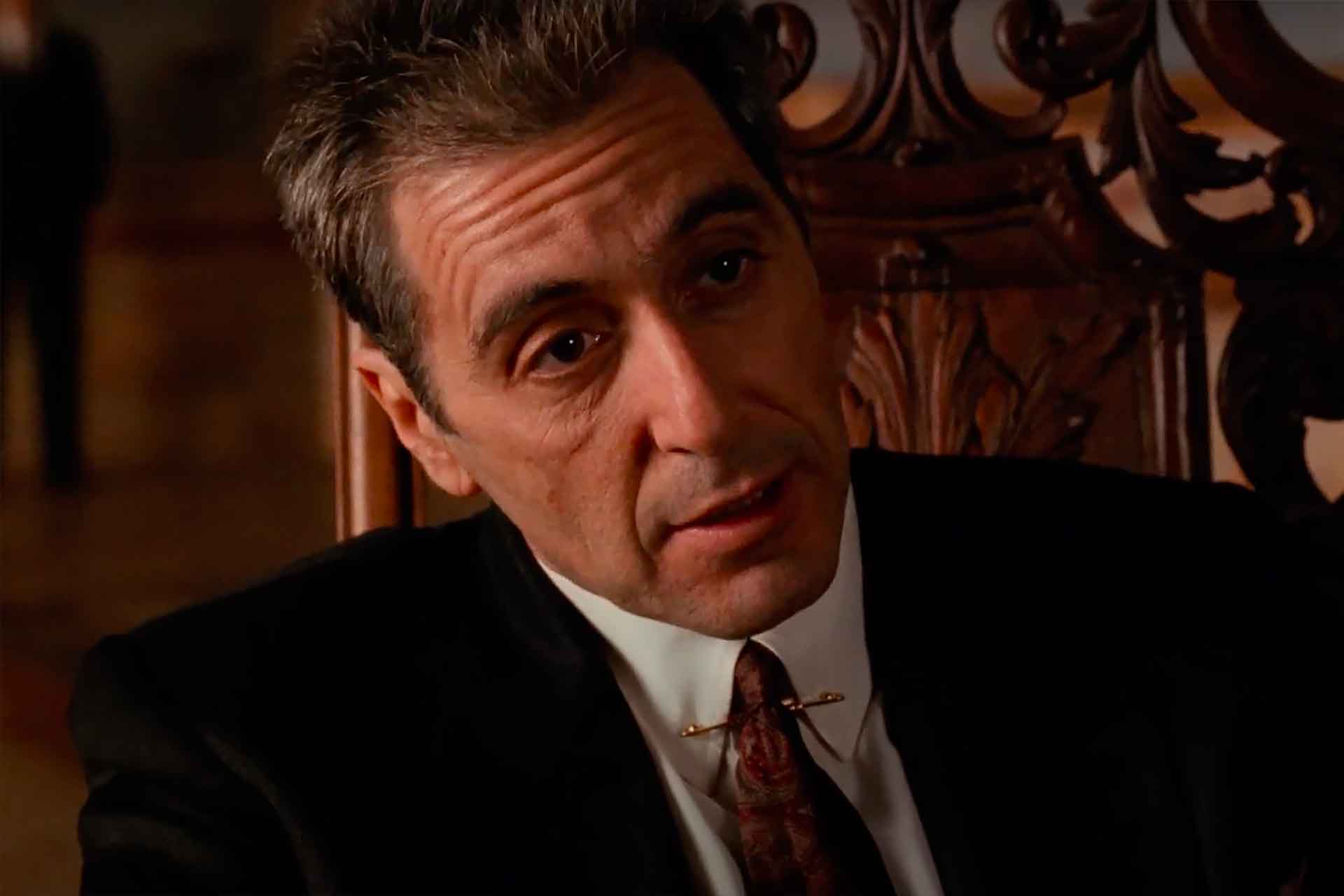
Joining foes from the good old days (Barzini, Hyman Roth, Pentangeli, Altobello) is a featured representative of the “new” Mafia, Joey Zasa, a “bela figura” dapper don featured on magazine covers (“The Best Dressed Gangster”), in part based on men like John Gotti, Joseph Colombo (the gangster/activist who protested The Godfather ’s 1971 production), Crazy Joe Gallo, and perhaps even Donald Trump. We open in 1979, but it’s important to note that after 1972 Mafia culture was itself probably more affected by Coppola and Puzo’s films than vice versa. The theatrical dianoia is paramount in this last Godfather story, pointedly set in a post- Godfather era. The gangster as ham-fisted actor: Eli Wallach as Don Altobello. Altobello has a flair for the theatrical, and Wallach makes him a hoot when putting on his geriatric pantomime, or then later perfectly mouthing the words to an opera. Indeed, Coppola's film is about masks: the speechmaker Michael, the tacky “Meucci Spokesman” Joey Zasa (Joe Mantegna), and Don Altobello (Eli Wallach), ostensibly an infirm and senile octogenarian, who is in truth a cunning rival determined to outlast Michael. Influenced by Noh Theater, Ran ’s Hidetora has the same expressive mask-like visage we see Al Pacino wearing as Michael, a face that is “ravaged” (as Coppola puts it) by time, disease, and guilt. At the beginning Michael tells us the Corleone Family has sold the casinos and no longer have interests in any illegitimacy-though still we see the past following him.īeyond plot, the Shakespearian influence on form and theme in relation to theater pertain to what Kurosawa and Coppola are doing with these films. Similarly, when we see Michael Corleone in Godfather III, he is removed from the Dorian Gray reptile we’re left with at the conclusion of Part II. Kurosawa had said that what frustrated him about Lear was Shakespeare’s ellipses, and in Ran, he follows feudal lord Hidetora (Tatsuyo Nakadei) years removed from his wartime cruelty, though the past is not finished with him. Perhaps more than that, the Lear adaptation of his idol, Akira Kurosawa’s Ran, released just five years before. The plot suggests that Shakespeare was on Coppola’s mind, particularly Lear. Michael Corleone in Godfather III, Hidetora in Ran. Sickness and mortality compels the real Michael, despairing and thirsting for redemption, to finally emerge at the conclusion. He is a stuffed shirt, hunched over, his words rehearsed and locked in even with his family in closed quarters (the much-older Pacino’s growly voice, so different from what it was in 1974, emphasizes an abraded stiffness and suggests some scar-tissue to his rhetoric). Even so, his soul is crackling like his mask-like countenance. Hung up on respectability and washing away his sins from public dissemination, the mega-rich Rockefeller-like Michael Corleone has donated enough money to have hospital wings named after him. For Coppola, this brighter social aspect is a new dimension of his tragic flaws, tying in with the filmmaker’s interest in theatricality. He is more affable, humorous, and presentational.


Michael cannot be the same person he was 20 years before. Coppola was arguably more invested in Megalopolis than in Mario Puzo, exploring his unrealized opus’ theme of metamorphoses through time. The Godfather Part III, or as it’s been christened since 2020, The Godfather Coda: The Death of Michael Corleone, may be disappointing for some because it doesn’t reconcile the new Michael Corleone with the somnambular Michael from Part II.


 0 kommentar(er)
0 kommentar(er)
